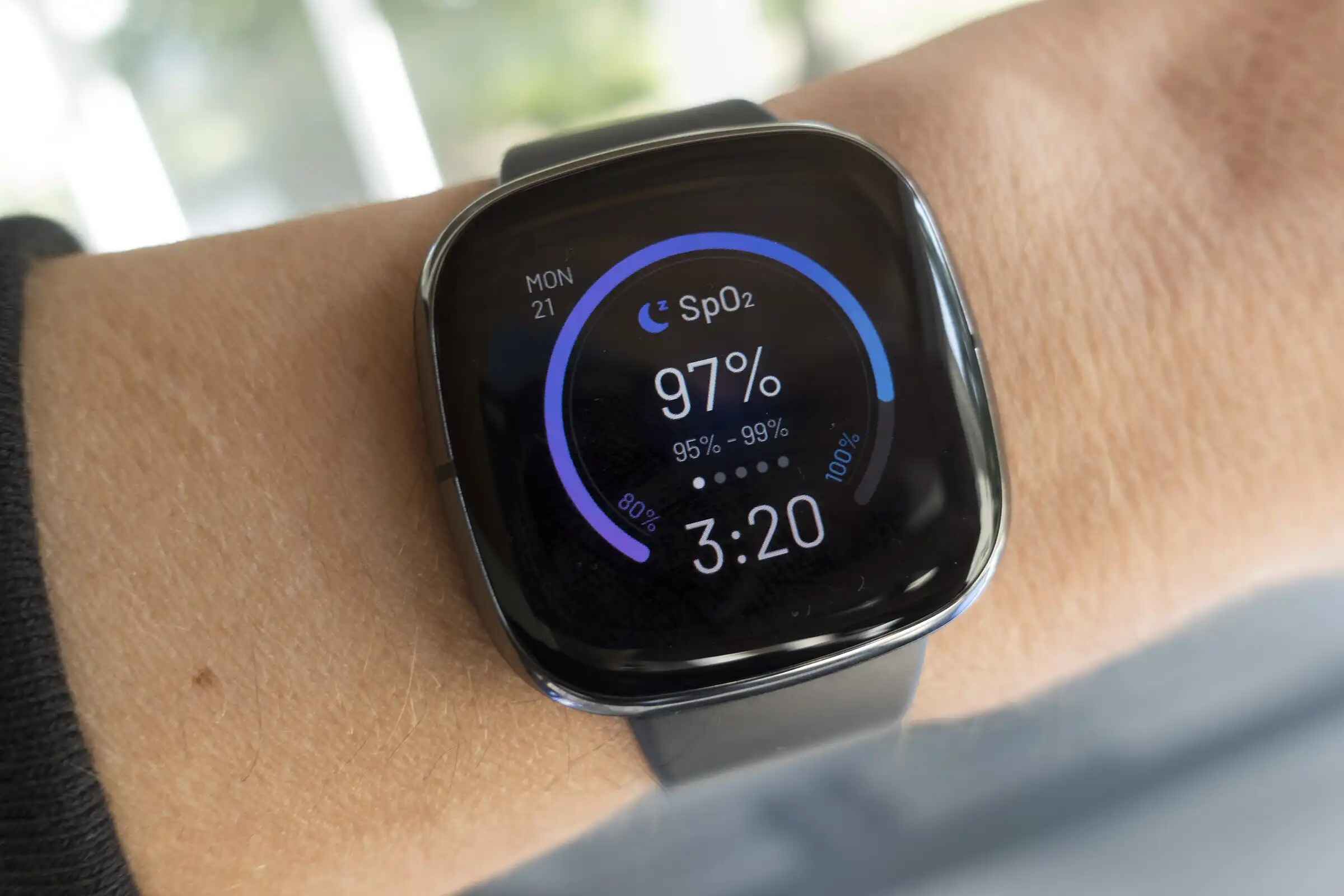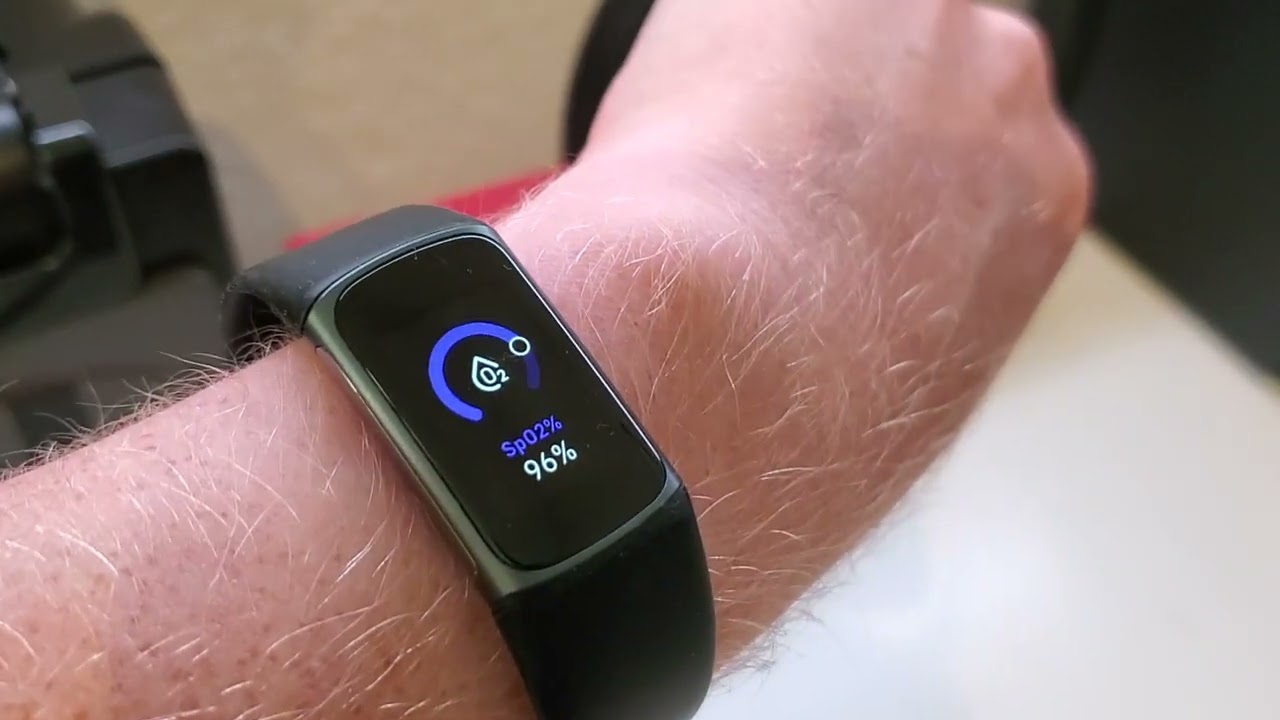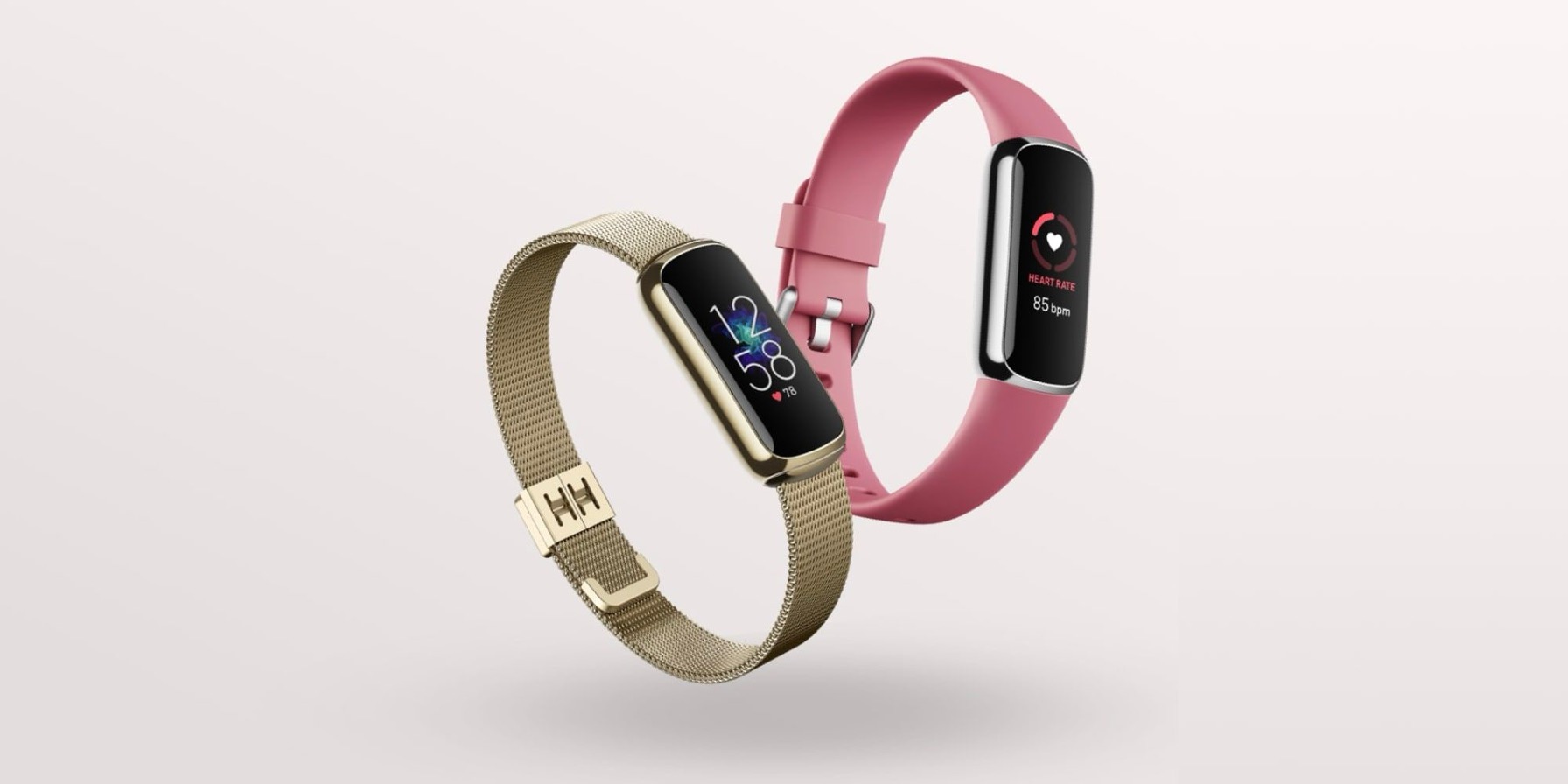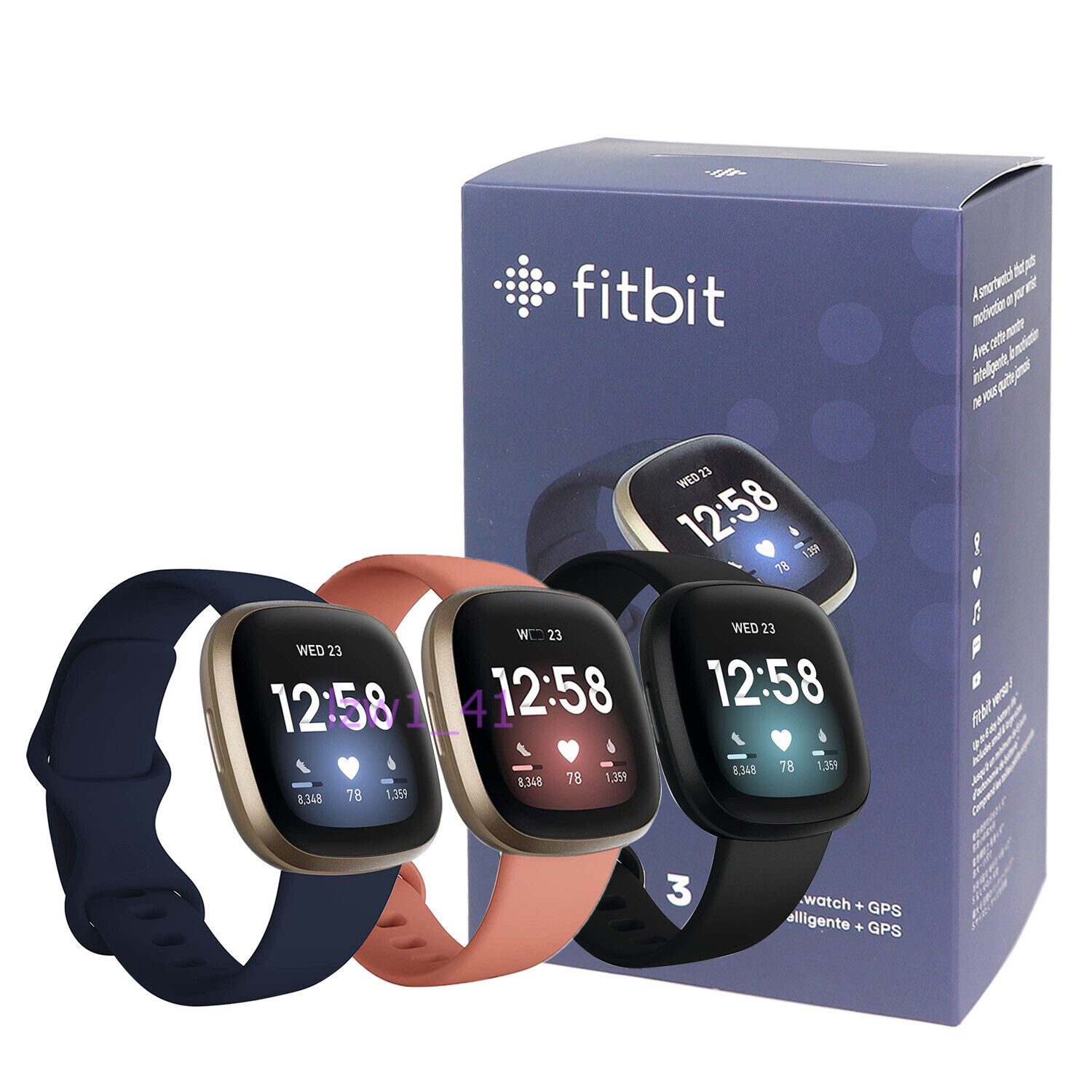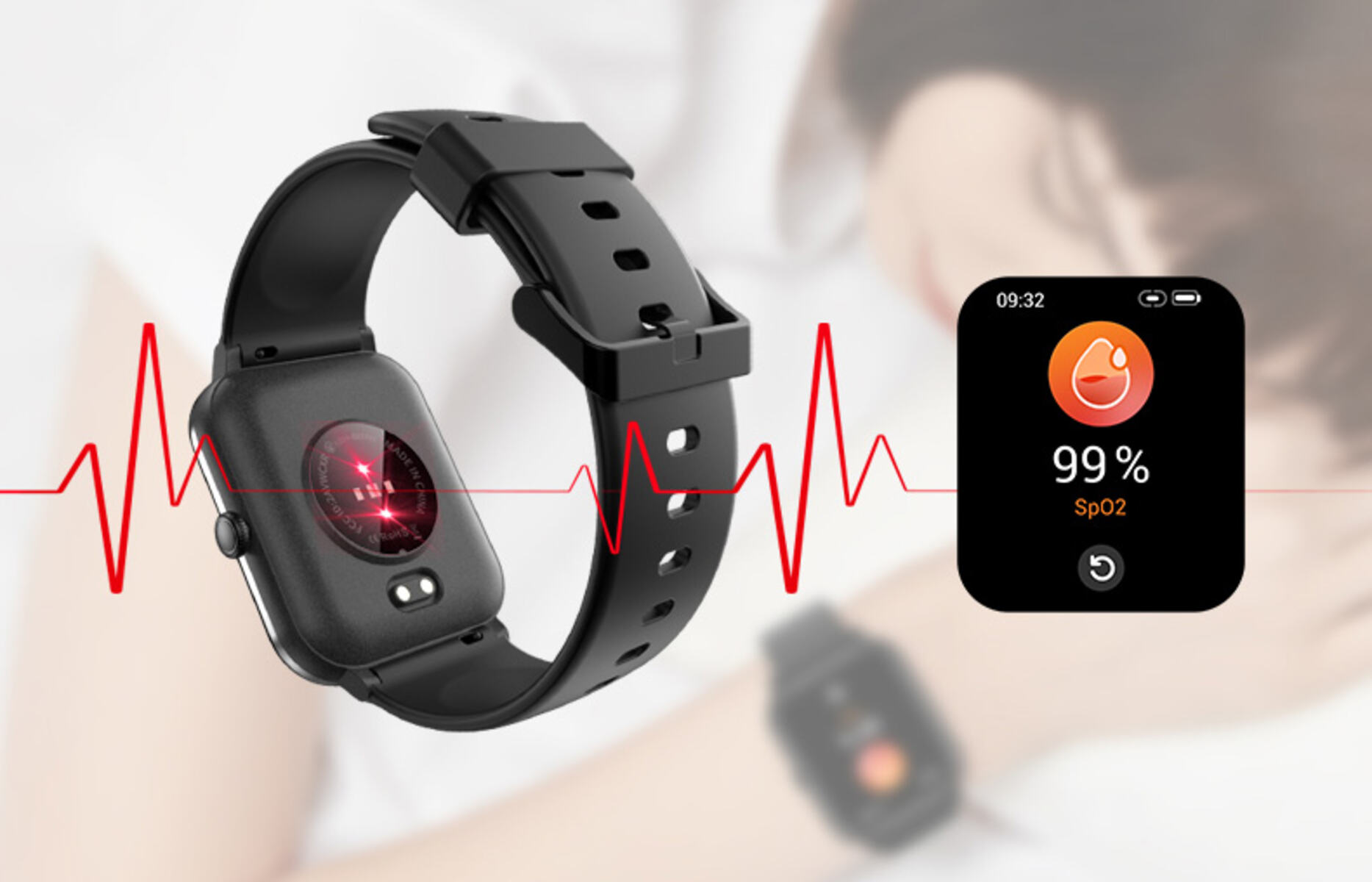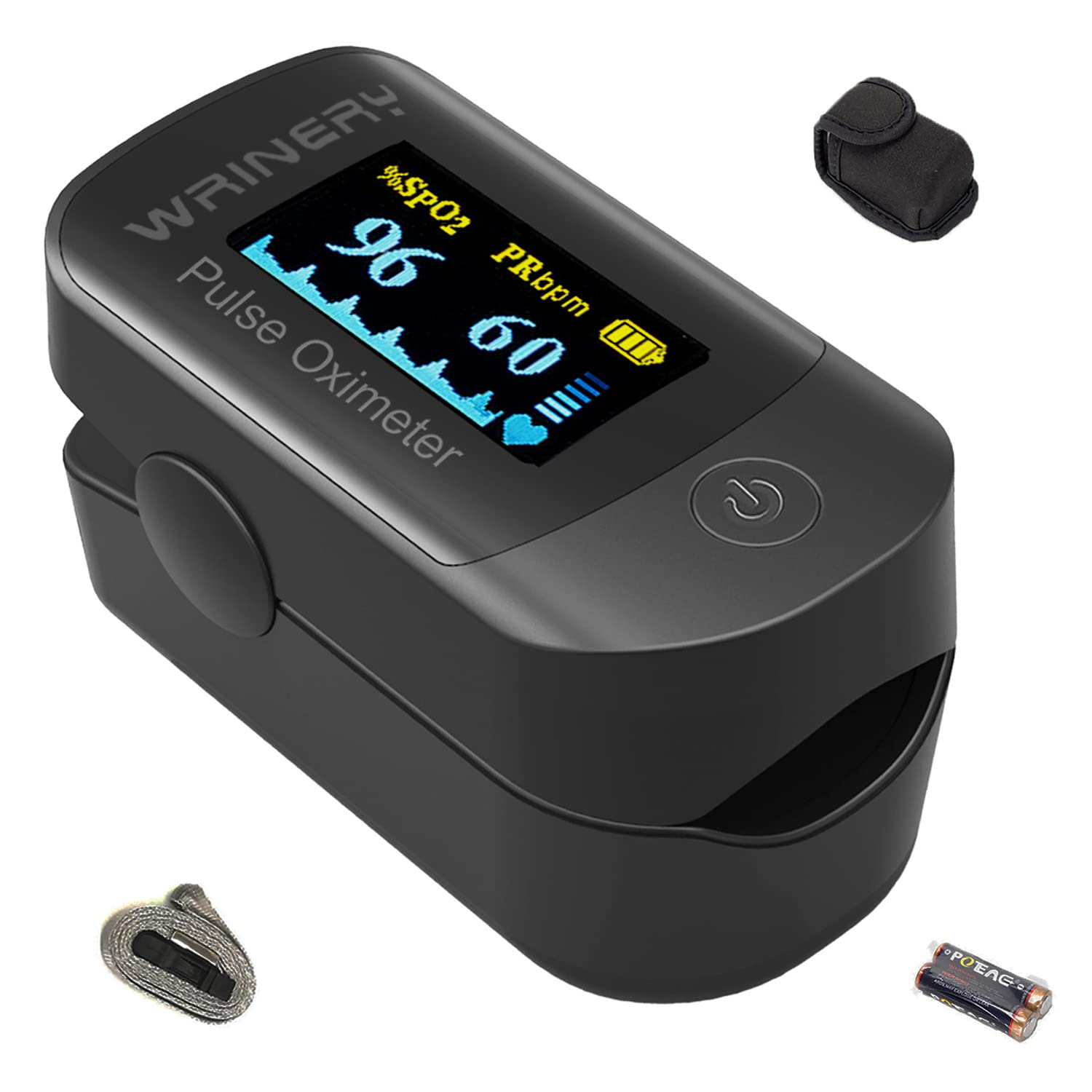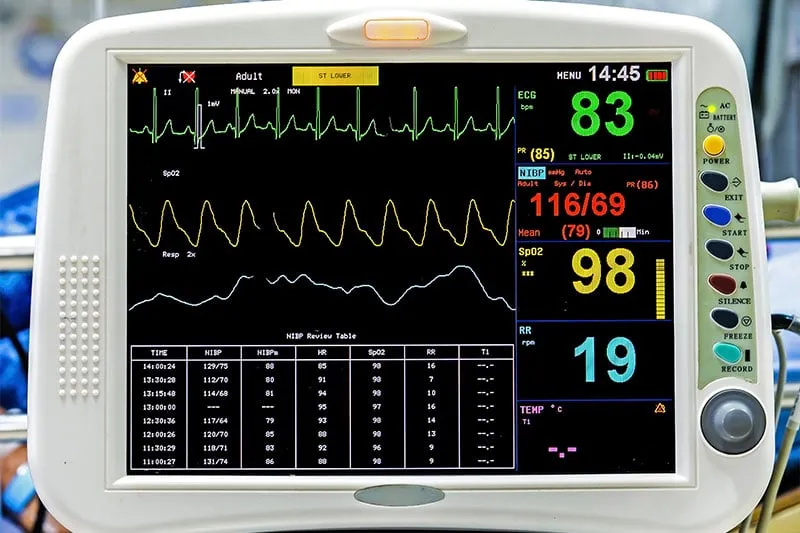Introduction
Welcome to the world of wearables, where technology seamlessly integrates with health monitoring to provide valuable insights into our well-being. Among the array of health metrics tracked by these devices, one that has gained significant attention is Oxygen Saturation, often referred to as SpO2. In this article, we will delve into the intricacies of SpO2 monitoring, particularly focusing on how Fitbit devices offer valuable insights into this vital health metric.
Oxygen Saturation, denoted by the acronym SpO2, is a crucial indicator of the amount of oxygen carried by the red blood cells in the body. This metric is expressed as a percentage and represents the level of oxygen saturation in the blood. In essence, it measures the efficiency of oxygen transport from the lungs to the body's tissues. While traditionally used in medical settings, the integration of SpO2 monitoring into wearable devices such as Fitbit has empowered individuals to gain deeper insights into their respiratory health on a day-to-day basis.
As wearables continue to evolve, the inclusion of SpO2 monitoring capabilities has opened up new avenues for individuals to proactively manage their health. By understanding the significance of SpO2 readings and their implications, users can make informed decisions to optimize their well-being. Fitbit, a prominent player in the wearable technology landscape, has integrated SpO2 monitoring into its devices, allowing users to effortlessly track this vital metric and gain valuable insights into their overall health.
In the following sections, we will explore the intricacies of SpO2, understand how Fitbit devices measure this crucial metric, interpret SpO2 readings, and delve into the factors that can influence these readings. Furthermore, we will highlight the importance of monitoring SpO2 and how it contributes to a holistic approach to health and well-being. Let's embark on this journey to unravel the world of Oxygen Saturation and its significance in the realm of wearable technology.
What is Oxygen Saturation (SpO2)?
Oxygen Saturation, often abbreviated as SpO2, is a pivotal physiological parameter that measures the percentage of hemoglobin binding sites in the bloodstream occupied by oxygen. This metric serves as a crucial indicator of the efficiency of oxygen transport from the lungs to the body's tissues. In simpler terms, it reflects the amount of oxygen being carried by the red blood cells, offering valuable insights into respiratory function and overall well-being.
The measurement of SpO2 is integral to understanding the oxygen-carrying capacity of the blood. Hemoglobin, the protein molecule in red blood cells, plays a fundamental role in transporting oxygen from the lungs to the body's tissues. When oxygen binds to the hemoglobin, it forms oxyhemoglobin, which is essential for sustaining cellular functions throughout the body. The SpO2 value represents the percentage of hemoglobin binding sites occupied by oxygen at a given time, indicating the saturation level of oxygen in the blood.
In a healthy individual, the typical SpO2 level is around 95-100%, signifying that the majority of the hemoglobin binding sites are occupied by oxygen. However, it's important to note that variations in SpO2 readings can occur due to factors such as altitude, physical activity, and overall health status. Lower SpO2 levels may indicate potential respiratory or circulatory issues, prompting the need for further evaluation and medical intervention.
The integration of SpO2 monitoring into wearable devices has revolutionized the accessibility of this vital health metric. Individuals can now conveniently track their SpO2 levels in real time, gaining valuable insights into their respiratory health and making informed decisions to optimize their overall well-being. This proactive approach to health monitoring empowers users to take preemptive measures and seek appropriate medical guidance if any anomalies in SpO2 readings are observed.
Understanding the significance of SpO2 goes beyond mere numerical values; it encompasses a deeper awareness of respiratory health and the body's oxygenation status. By comprehending the essence of SpO2 and its implications, individuals can actively engage in maintaining a healthy lifestyle and make informed choices to support their physiological well-being. In the subsequent sections, we will delve into how Fitbit devices measure SpO2 and interpret the readings to provide users with actionable insights for holistic health management.
How Does Fitbit Measure SpO2?
Fitbit employs innovative technology to measure SpO2 levels, providing users with valuable insights into their respiratory health. The process involves the utilization of photoplethysmography (PPG) to track SpO2 readings. PPG is a non-invasive optical technology that measures changes in blood volume within the microvascular bed of tissue. Fitbit devices equipped with SpO2 monitoring capabilities utilize this advanced technology to capture and analyze the pulsatile nature of blood flow, thereby deriving SpO2 readings.
The PPG sensor embedded in Fitbit devices emits light into the skin, which penetrates the microvascular tissue bed. As the blood flow pulsates with each heartbeat, the amount of light absorbed by the blood varies, creating a measurable signal. This signal is then processed to discern the changes in blood volume, enabling the device to calculate the oxygen saturation level in the blood.
Fitbit's sophisticated algorithms analyze the data acquired from the PPG sensor to accurately determine SpO2 levels. By leveraging this cutting-edge technology, Fitbit devices provide users with real-time SpO2 readings, empowering them to gain deeper insights into their respiratory well-being.
The integration of SpO2 monitoring into Fitbit devices represents a significant advancement in wearable technology, as it enables users to conveniently track their oxygen saturation levels throughout the day. This seamless integration aligns with Fitbit's commitment to empowering individuals to take proactive measures to enhance their health and well-being.
By understanding the intricacies of how Fitbit measures SpO2, users can appreciate the precision and reliability of the technology underpinning this vital health metric. The seamless fusion of advanced PPG technology with user-friendly wearable devices underscores Fitbit's dedication to delivering comprehensive health monitoring solutions to its users.
In the subsequent sections, we will delve into the interpretation of SpO2 readings and explore the factors that can influence these readings, shedding light on the significance of monitoring SpO2 for holistic health management.
Interpreting SpO2 Readings
Interpreting SpO2 readings is paramount in gaining valuable insights into respiratory health and overall well-being. The SpO2 value, expressed as a percentage, serves as a pivotal indicator of the oxygen saturation level in the blood. Understanding the implications of SpO2 readings enables individuals to proactively monitor their respiratory function and take informed steps to optimize their physiological well-being.
In a healthy individual, the typical SpO2 level ranges from 95-100%, indicating optimal oxygen saturation in the blood. This signifies that the majority of the hemoglobin binding sites are occupied by oxygen, ensuring efficient oxygen transport to the body's tissues. Consistently observing SpO2 levels within this range is indicative of robust respiratory function and overall physiological equilibrium.
Deviation from the normal SpO2 range may warrant closer attention and further evaluation. A decline in SpO2 levels, particularly below 95%, could signify potential respiratory or circulatory issues. It is essential to note that SpO2 readings are influenced by various factors, including altitude, physical activity, and overall health status. For instance, individuals residing at higher altitudes may naturally exhibit slightly lower SpO2 levels due to the reduced oxygen pressure in the atmosphere.
Monitoring SpO2 readings over time provides a comprehensive view of respiratory health and can reveal patterns or trends that warrant consideration. Consistent or recurrent deviations from the individual's baseline SpO2 levels may necessitate consultation with a healthcare professional for a thorough assessment.
Fitbit devices equipped with SpO2 monitoring capabilities empower users to track their oxygen saturation levels seamlessly. By regularly monitoring SpO2 readings, individuals can gain valuable insights into their respiratory well-being and make informed decisions to support their overall health. The convenience of accessing real-time SpO2 data enables users to proactively manage their physiological well-being and seek appropriate medical guidance if any anomalies in SpO2 readings are observed.
In essence, interpreting SpO2 readings goes beyond numerical values; it encompasses a proactive approach to respiratory health management. By comprehending the significance of SpO2 and its implications, individuals can actively engage in maintaining a healthy lifestyle and make informed choices to support their physiological well-being.
The integration of SpO2 monitoring into wearable devices such as Fitbit represents a significant stride in empowering individuals to take charge of their health. By interpreting SpO2 readings and leveraging the actionable insights derived from these metrics, users can embark on a journey towards holistic well-being and proactive health management.
Factors Affecting SpO2 Readings
Several factors can influence SpO2 readings, contributing to variations in oxygen saturation levels. Understanding these factors is crucial in interpreting SpO2 data accurately and comprehensively. Here are the key elements that can impact SpO2 readings:
Altitude:
At higher altitudes, the oxygen pressure in the atmosphere decreases, leading to lower oxygen saturation levels in the blood. This physiological response, known as hypoxemia, is the body's adaptive mechanism to cope with reduced oxygen availability at elevated altitudes. Individuals residing or traveling to high-altitude locations may experience lower SpO2 readings, reflecting the body's adjustment to the environmental oxygen levels.
Physical Activity:
Engaging in physical exertion or strenuous activities can affect SpO2 readings, especially during intense workouts or exercises. The body's oxygen demand increases during physical activity, leading to temporary fluctuations in SpO2 levels. It's not uncommon for SpO2 readings to decrease during vigorous exercise and return to baseline levels upon cessation of the activity. Monitoring SpO2 during physical exertion provides insights into the body's oxygen utilization and respiratory response to exercise.
Health Conditions:
Certain health conditions, such as chronic obstructive pulmonary disease (COPD), asthma, or respiratory infections, can impact SpO2 readings. Individuals with respiratory disorders may exhibit lower baseline SpO2 levels due to impaired lung function or compromised oxygen exchange. Monitoring SpO2 in individuals with respiratory conditions is essential for assessing their oxygenation status and detecting any abnormalities that may necessitate medical intervention.
Ambient Conditions:
Environmental factors, including air quality and temperature, can influence SpO2 readings. Exposure to pollutants or poor air quality may affect respiratory function and, consequently, SpO2 levels. Additionally, extreme temperatures can impact the body's oxygen regulation and may contribute to fluctuations in SpO2 readings. Monitoring SpO2 in varying environmental conditions provides valuable insights into the body's adaptive responses to different ambient settings.
Sleep Patterns:
During sleep, especially in individuals with sleep apnea or other sleep-related breathing disorders, SpO2 readings may exhibit fluctuations. Episodes of intermittent hypoxia, characterized by temporary drops in oxygen saturation levels during sleep, can be detected through SpO2 monitoring. Tracking SpO2 during sleep offers insights into respiratory patterns and aids in identifying potential sleep-related respiratory issues.
By recognizing these influential factors, individuals can contextualize their SpO2 readings and gain a comprehensive understanding of their respiratory health. Fitbit devices equipped with SpO2 monitoring capabilities empower users to track their oxygen saturation levels in diverse settings and activities, facilitating a holistic approach to health management. The integration of SpO2 monitoring into wearable technology represents a significant advancement in promoting proactive health monitoring and fostering a deeper awareness of respiratory well-being.
Importance of Monitoring SpO2
Monitoring SpO2 holds immense significance in the realm of proactive health management and well-being. The integration of SpO2 monitoring into wearable devices, such as Fitbit, has elevated the accessibility of this vital health metric, empowering individuals to gain valuable insights into their respiratory function and overall physiological equilibrium.
The importance of monitoring SpO2 transcends numerical values; it embodies a proactive approach to respiratory health management. By regularly tracking SpO2 levels, individuals can detect potential deviations from their baseline readings, prompting further evaluation and necessary interventions. This proactive stance enables early detection of respiratory issues, facilitating timely medical attention and intervention when warranted.
Furthermore, monitoring SpO2 is particularly crucial for individuals with pre-existing respiratory conditions, such as asthma, COPD, or sleep-related breathing disorders. By consistently tracking SpO2 levels, individuals can assess the effectiveness of their respiratory management strategies and identify any fluctuations that may necessitate adjustments in their treatment plans. This proactive monitoring approach empowers individuals to actively engage in optimizing their respiratory well-being and maintaining a balanced lifestyle.
Moreover, SpO2 monitoring offers valuable insights into the impact of environmental and lifestyle factors on respiratory health. Individuals can observe how altitude, physical activity, ambient conditions, and sleep patterns influence their SpO2 readings, fostering a deeper understanding of their body's adaptive responses to diverse settings. This awareness enables individuals to make informed decisions regarding their activities, environmental exposures, and sleep habits, aligning with a holistic approach to health and well-being.
The seamless integration of SpO2 monitoring into wearable devices, such as Fitbit, aligns with the paradigm shift towards personalized health management. By empowering individuals to access real-time SpO2 data and derive actionable insights from these metrics, wearable technology catalyzes a proactive and informed approach to health monitoring. This not only fosters a deeper connection to one's physiological well-being but also promotes a sense of empowerment and autonomy in managing one's health proactively.
In essence, the importance of monitoring SpO2 lies in its ability to provide individuals with a comprehensive understanding of their respiratory health, enabling them to make informed decisions, seek timely medical guidance, and actively engage in optimizing their well-being. The integration of SpO2 monitoring into wearable devices represents a pivotal advancement in promoting holistic health management and fostering a proactive stance towards respiratory well-being.
Conclusion
In conclusion, the integration of SpO2 monitoring into wearable devices, exemplified by Fitbit's innovative approach, has redefined the landscape of health monitoring. The ability to seamlessly track oxygen saturation levels in real time empowers individuals to gain valuable insights into their respiratory well-being, fostering a proactive and informed approach to health management.
By comprehending the intricacies of SpO2 and its implications, users can proactively monitor their respiratory health, detect potential deviations from baseline readings, and seek timely medical intervention when necessary. The convenience of accessing real-time SpO2 data not only promotes a deeper awareness of physiological well-being but also instills a sense of empowerment in individuals to take charge of their health proactively.
Furthermore, the interpretation of SpO2 readings extends beyond numerical values; it encompasses a holistic understanding of respiratory health, the impact of environmental factors, and the body's adaptive responses to diverse settings. This comprehensive perspective fosters informed decision-making, enabling individuals to align their activities, environmental exposures, and lifestyle choices with their respiratory well-being.
The significance of monitoring SpO2 is particularly pronounced for individuals with pre-existing respiratory conditions, as it facilitates the assessment of treatment effectiveness and the early detection of potential issues. Additionally, the proactive monitoring of SpO2 levels during physical activity, sleep, and exposure to varying environmental conditions offers a comprehensive view of respiratory health, contributing to a balanced and informed approach to well-being.
Fitbit's commitment to integrating SpO2 monitoring capabilities into its devices underscores the brand's dedication to empowering individuals to take proactive measures towards their health. The seamless fusion of advanced PPG technology with user-friendly wearable devices reflects a pivotal advancement in personalized health monitoring, aligning with the paradigm shift towards proactive and holistic well-being.
In essence, the inclusion of SpO2 monitoring on Fitbit devices signifies a transformative leap in health technology, enabling users to embark on a journey towards holistic well-being, proactive health management, and a deeper connection to their physiological equilibrium. As wearable technology continues to evolve, the integration of SpO2 monitoring stands as a testament to the potential of technology to empower individuals in their pursuit of optimal health and well-being.







